Striker.
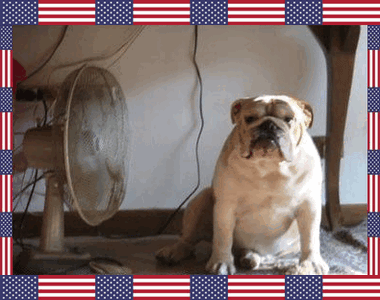
Son And Grandson Of Striker.
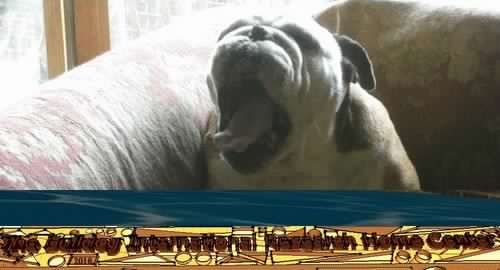
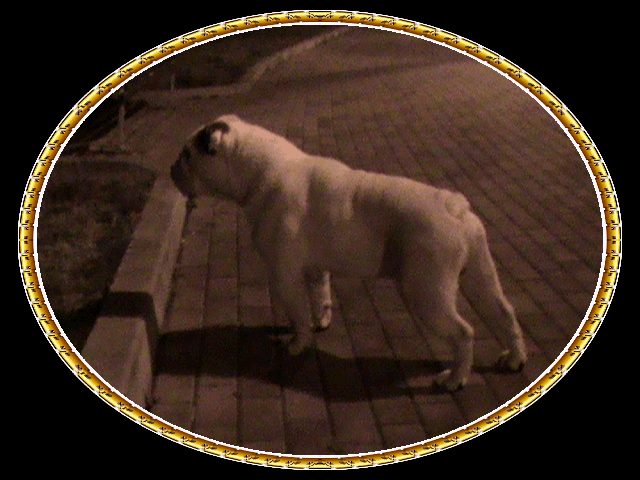
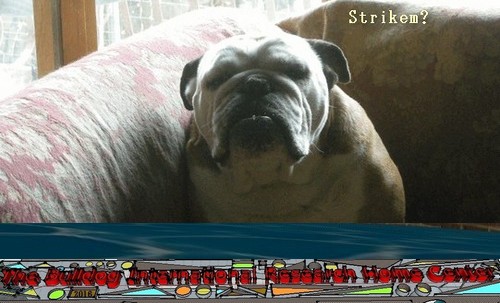
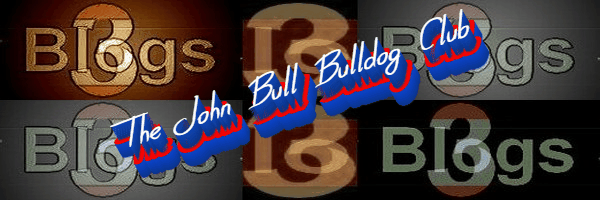

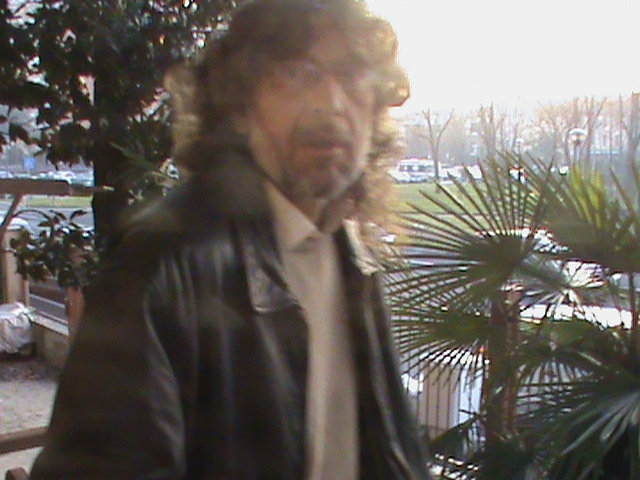 CONTACT: originalbulldogclub@gmail.com
CONTACT: originalbulldogclub@gmail.com


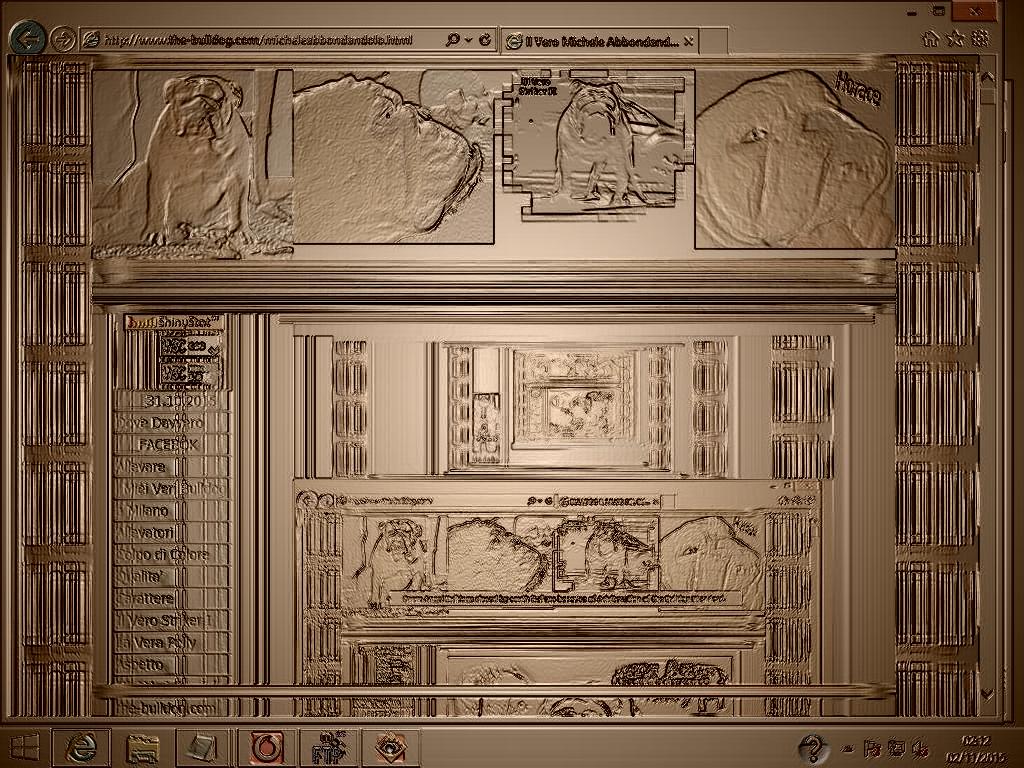
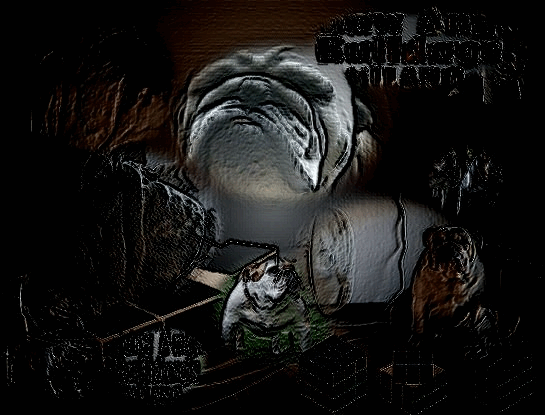


Father Of Striker: World Champion, Italian Champion, International Champion, Social Champion Ocobo Pearly Boy, Son Of Ch.Ocobo Tully. Mother: Tuffnuts Snow Angel, Daughter Of Ch. Tuffnuts Striker, Son Of Living Legend
R.H. Voss suggested that the breed goes back to the war dogs of the ancient Britons. Briton was made a Roman province in the year 50 A.D., when the British chieftain Caractacus was defeated by Emperor Claudius. At that time there were "pugnaces" or war dogs, in Briton. They were used in war, for the contests in the amphitheater & in the chase. These fighting dogs of Briton were known as the Broad Mouthed Dogs of Briton. There is very little doubt that they were the original & remote ancestors of our Mastiff & Bulldog. They appealed to the Romans, who sent considerable numbers of them from Briton to Rome, to take part in the sports of the amphitheater, & it has even been said that the Romans appointed an officer to select British dogs & export them to Rome. There is evidence that from Italy the breed of British war dogs was disseminated over the continent in the years 50/410.
In 1585 a Hondius painter produced an oil paintingon an oak panel [which came into the possession of Mr. Frank Adcock] which depicted two bandogges or Alaunts attacking a wild bore in the bed of a shallow stream. One was red with a black muzzle, & the other was white with brindle ear patches, & they were both had "rose ears", & long fine tails, & looked as though they must have weighed 100 to 120 lbs. The red dog had a firm grip on the left ear of the boar.
The fact that the "pugnaces" of Briton were known as the "Broad Mouthed dogs of Briton" & that Claudian in 390 A.D. stated that they were able to pull down a bull, shows that these dogs were, of course, in a rough & typical manner only the original stock from which the Bulldog & Mastiff sprang. That these dogs were in the years 50/410 exported to Rome by the Romans, & from Rome disseminated over the Continent, there is no doubt. Further, it has been shown that as early as 1154 the baiting of bulls & bears by dogs in England was a popular amusement. Also it shows that from 1151 to 1411 Bordeaux belonged to England, & that the English court was actually situated there from 1356 until 1367, with its accompaniment of bull & bear baiting. It was while the English still held Bordeaux that the Alaunt was undoubtedly, exported to France from 141 onwards for a period on 260 years, & he was almost certainly crossed there with some remote descendants of the British war dogs which hundreds of years previously had traveled to France via Rome. It is absolutely in keeping, therefore, to imagine that the Dogue de Bordeaux as imported to England in 1895 by Mr. Sam Wookiwass & the late Mr. H.C. Brooke, was originally descended from the English Alaunts which were exported to Bordeaux from 1151 to 1411.
The Dogue the Bordeaux
In 1895, in the year that Mr. John Proctor judged the breed at the Bordeaux show, it was a dog of an average height of 25-1/2 inches and of an averaged weight of 120 lbs. The skull circumference was 26 inches. Nose length as measured from the corner of the eye to the tip of the nose was three inches on the average. These dogs for many years from the English occupation of Bordeaux onwards, were bred for encounters in the arena, being pitted against each other or against the bull, the bear, or the ass; & even as late as 1906 these encounters occasionally took place. The famous Mastiff, Beaufort, whose measurements approached the standards of perfection were a 27-inch skull, & the length of his muzzle was 4 inches, whilst he stood 29-1/2 inches at the shoulder, & therefore weighed about 160 lbs, forty pounds more than the average Dogue de Bordeaux. In 1907 the dog's use in the arena in France began to be entirely discontinued, & at the Paris dog show that year there were only 10 Dogues on view, & the winners had button ears & black mask, like English Mastiffs.THE NAME "BULLDOG"
During the reign of Mary, Elizabeth, James 1, and Charles 1, which covered the years 1553 to 1649, the baiting of bulls & full-grown bears by dogs was a very popular sport. Hentzner, in his itinerary, printed in Latin in the reign of Queen Elizabeth in 1598, stated that there was a place built in the form of a theater for baiting & "great English dogs" in 1598 were very large.In 1556 Philip II became king of Spain & introduced great numbers of English Alaunts into Spain & the Islands of Cuba & Majorca for the purpose of the arena. In my own mind there is very little doubt that the dog from Burgos depicted in the old bronze plaque, dated 1625, was a descendant of these English dogs or was an imported English dog himself.
It was not until 1631, in the reign of Charles I, that the name "BULLDOG" was first mentioned in England. There is a letter in the record office which was written in 1632 from St. Sebastian in Spain, by an Englishman called Prestwich Eaton to his friend George Wellingham in St. Swithens Lane, London, asking for a good "MASTIFF" dog & two "BULLDOGS" to be sent out to him. This is definite proof that six years after the Burgos plaque the export of Bulldogs from England to the sport loving Dons of Spain, which had been commenced by Philip II 75 years earlier, was still continuing.
The cropped dog depicted on the old Spanish plaque of 1625 was very noticeably a big dog & very noticeably a BULLDOG, being much underhung, with a big skull and well laid back nose. Many years later in the year 1840, Bill George imported from Spain a big BULLDOG, which was called Big Headed Billy, whilst in 1868 Mr. Marquart brought over Bonnhomme & Lisbon, & in 1873 Mr. Frank Adcock acquired Toro and Alphonse in Madrid. All these five were termed "purebred Spanish Bulldogs," & they were exactly of the type depicted on the 1625 plaque. Big Headed Billy was a brindle pied, Bonhomme a brindle, Toro a red carroty brindle, & Alphonse a fawn with a black mask and white markings, & all these four dogs weighed 90 lbs. I heard it stated that Lisbon & Alphonse were both noted dogs in the arena in Spain. Toro had a 22-inch skull, stood 22 inches at the shoulder, & measured 2 -/2 inches from the corner of his eye to the tip of his nose. It is clear to me that these big 90-pound Spanish dogs were reasonably short in face with proper Bulldog tails having a downward crook at the root & at the &. They were all cropped.
It seems to me quite clear that the Dogue de Bordeaux, which averaged 120 lbs. in weight & was 25-1/2 inches in height, 26-1/2 inches in skull circumference, & three inches in length of face with, in many cases, light eyes & red noses, & in all cases only slight projection of underjaw had tails which reached in the hocks, represented the EnglishAlaunt as bred in England & Bordeaux in the years 1151/1411.
Whilst the Spanish Bulldog, which averaged only 90 lbs. in weight, 2-1/2 inches in length of face, & which had dark eyes & a black nose & mask was well underhung with a moderately short crooked down tail. The Bulldogs rolling gait represented the English Bulldog as bred in the years 1556/1649, when the Bulldog was just beginning to be a different dog from the Mastiff.
To the modern eyes, the Dogue de Bordeaux & the Spanish Bulldog would appear to be of Mastiff type, but the Bulldog less so clearly due the fact that the English dogs which began to go out to Spain in 1556 were already much more of the Bulldog type than the English dogs that went to Bordeaux in the years 1151/1411, before the Bulldog & the mastiff had begun to emerge from the Alaunt & to take definite shapes of their own.
The Smaller Dog Appear
The new system of bull-baiting, as practiced from 1686 onwards favored an active dog of moderately low stature & size, with his nose well laid back & a protruding underjaw. The great Bulldog of 90 lbs in weight which had been in Vogue when bull-baiting was the sport of kings, was no longer wanted. The common folk who now gad the sport in hand could not afford to keep such huge animals. Much can happen to change a breed of a dog in fifty years & by inbreeding and breeding with a fixed purpose in view, between the years of 1686 and 1735, a dog of definite type & of an average weight of 50 to 60 lbs, was produced. The dog of 1735, was smaller in skull than the Bulldog of today, longer in face, higher in shoulder, not so wide in front, lighter in bone and body, & less exaggerated in every way. The Bulldog that was gradually evolved in the years 1686-1735, though finally more than 40% lighter than his ancestors & was not only the bravest dog but actually the bravest creature on earth, not even excepting the old English Game Cock. This was an indisputable fact, which was proven time and time again.The dog which was produced in the years 1686-1735, was the dog for the bull, & it was during those years & not before then that the Bulldog was taught & trained to pen the bull by the nose & never to attack him in any other place. As early as 1710, this method of attack became an inherited tendency through today, though bull-baiting was abolished 98 years ago, or around 1835...
Dog Fighting & The Bull Terrier
From 1735 to 1835 the Bulldog was bred on the same lines with no alterations in type. In 1835 the cruel practice of bull-baiting was prohibited by law & the Bulldog's true occupation disappeared. He would probably have mostly died out but for the barbarous so called sport of dog fighting. Dog fighting commenced about 1690, in the reign of James II. Burnette in his "History of My Own Times" written about 1700, refers to dog fighting & the gardens at which these scenes were enacted. For fully 100 years, the Bulldog was the only dog used in this cruel pastime; but in or about the year 1800, the devotees of the game sought to produce a quicker dog in the pit..At this time there were many smooth-coated Old English Terriers in varied colorings, but all smart, active & alert. Excellent for killing rats or unearthing the fox. The larger types of these Terriers were crossed with the Bulldog & the product which was a dog that combined all the dash & speed of the terrier with the indomitable courage & fighting instinct of the Bulldog. These dogs were known as Bull Terriers. In the years 1800 & 1835, when the notorious Westminster Pit flourished, the young Corinthians of those days indulged freely in dog fighting. & it is probable that a certain number of pure Bulldogs were fought in the pit till at least 1840.
Dog fighting, as well as bull & bear baiting, was made illegal in 1835, but it continued to be carried on secretly in quite an extensive manner until about 1880, more especially in London, Birmingham, Liverpool & several towns in the black country, notably Walsall.
From 1840 until about 1855, no other dog was used in the pit but the comparatively short-faced, coarse, & bandy-legged Bull Terrier. In about 1855 James Hinks, of Birmingham, produced the first of the modern white Bull Terriers, which he had obtained by crossing the Bulldog & the Terrier with the refined & graceful white English Terrier. After 1880 police supervision became much more strict, though fights were secretly staged in different towns on a number of occasions between 1880 & 1899, that being the last year I ever heard of a dog fight being held.
Bulldogs a Century Ago
Let us now revert to the year 1835, when bull baiting, bear baiting, & dog fighting were abolished by law. The Bulldog was then looked upon as the associate of rogues & vagabonds & was condemned by the better class of people for keeping bad company. For five years, the Bulldog was probably only kept in existence by the fact that he still had a few admirers who stuck to him as a fighting dog, but by 1840 there were probably less Bulldogs in England than at any period during the breed existence. The bulk of Bulldogs at that time were 45 to 50-pound dogs upon the lines which they had been bred for that type & purpose had emerged about 1735; that is to say, they were extremely active, powerful, game, & tenacious dogs, much more leggy & much less coddley & not nearly so heavy built as our present day dogs, but nevertheless very muscular & compact, as shown in Scott's engraving of Crib & Rosa, dated 1817.At the same time there were still in existence a certain number of much bigger dogs running up to 65 pounds in weight, & these were undoubtedly the remanats of the days when Bulldogs were 90-pound dogs. These remnants of the old type were mostly in the hands of one or two people, notably Bill George, who in 1838 had succeeded Ben White as a keeper of baiting & fighting dogs; & they were naturally more of a Mastiff type than the smaller & more popular dog.
This was the position of 1840 & it was fortunate for the Bulldog that just about then, the interest in the dogs began to increase and working man fanciers began to arise who bred dogs with great care & who held small Public-House evening shows, where their dogs paraded on the sanded floors of rap rooms, the landlord usually providing the prizes, though sometimes the working men who kept these dogs, clubbed together to contribute a handsome silver collar, or something of that sort.
The pug cross & its Effects
The dogs which especially appealed to those good old working men fanciers were King Charles Spaniels & Bulldogs; & as they always preferred a little dog, there is no doubt that they crossed some of their smaller sized Bulldog bitches with Pug dogs in order to reduce the size of the progeny & also to produce the fawn emut color, which was then much admired. The average weight of the Pug dog of those days was 20 pounds, & their ears when not shorn off & rounded close to the head, were then as often Rose as Button. By crossing the two breeds over a decade of years, lightweight Bulldogs were produced weighing between 12 & 20 pounds. It being the desire of these dog fanciers to bantamize the Bulldog & produce as attractive a pet that would cost no more to rear than their Toy Spaniels & for which they would have a ready sale. There is no doubt that this Pug cross had a lot to do with the prevalence later on of the Fawn Emut or fallow emut Bulldog & with the prevalence of the screw tail, although less headstrong & daredevil in character. But as the Bulldog was much more the stronger character of the two, it is doubtful the alliance with the Pug actually affected the courage of the progeny; & as a matter of fact, the lightweight Bulldogs of the fifties, sixties & the seventies were particularly game little dogs often quite useful in the rat pit.In 1859 open dog shows began to be held, & the commencement of the dog show era immediately created an incentive for breeding Bulldogs for show purposes. The original show dogs were of the type as follows:
1. The dog which had been specifically bred to bait the bull from 1735 "when this dog first attained a very definite type" until bull baiting was abolished in 1835 & which since 1835 had maintained its existence by reason, first of a dog fighter & later of port house shows. These dogs varied from 45 to 50 pounds, as a rule.
2. The big dogs of more or less Mastiff type which were the remnants of the original 90-pound Bulldogs, by 1859 had been reduced in size to 60 lbs. These dogs received a stimulus by the importation of the Spanish Bulldog, Big-Headed Billy in 1840. Bill George's famous White dog Dan, which weighed 65 lbs. & was sold for 100 pounds, was a grandson of Big Headed Billy.
3. The little dogs of 12 to 25 pounds in weight which had been produced by inbreeding smaller sized Bulldogs & by crossing these small sized bitches with Pug dogs in the years 1835 to 1845. At the early shows, from 1859 to 1870, classes were always provided for dogs under 20 pounds. & those cases were as a rule, well filled. The little dogs as might be expected from their breeding, were usually very short in face with noses well laid back. They were chiefly bred in London, Nottingham, & Birmingham.
THE SPANISH INVASION
In the years 1868 to 1873 the fresh importations of Spanish bulldogs by Mr. Marquart & Mr. Frank Adcock further increased to the numbers & probably also to the size of the large-sized Bulldogs, though only four or five kennels used these imported Bulldogs at stud. These importations greatly incensed the breeders who swore by the 50-pound dog as specifically bred for bull-baiting as being the original British Bulldog, which in actual fact he was not; & it was the outburst of horror at the dangers of the Spanish Invasion which caused the formation of the Bulldog club in 1875.It cannot be proved that any fresh crosses have been made since the 1870's, but it is said that in the middle of the 90's a small Mastiff bitch was on more than one occasions mated to a Bulldog in order to produce dogs of greater size & substance. Whether this type is true or not, it is a significant fact that since that period we have had quite a number of dogs weighing over 70 lbs., some of them decided Mastiff type, although better rearing has doubtless played it's part in increasing size and substance.
The exhibition of the dog of today (1933*) is, therefore, the result of inter-crossing of the three distinct types which existed in 1859. The large size dog having been increased in numbers by crossing with the imported Spanish Bulldogs of the 70's & possibly further increased by the alleged Mastiff cross on a limited scale is the middle 90's.
Students of the Bulldog who take the trouble to read history of his evolution will readily understand why even today, (1933*) there is no uniformity of type or size in Bulldogs, & why it is possible for two dogs to be of different type & size while at the same time, they are both good ones. The differences in type & size spring from the different ingredients in their origin & these differences will never entirely disappear. I hope that my reader will also agree with me that the British Bulldog, the Old English Mastiff, the Dogue de Bordeaux, & the Spanish Bulldog all sprang originally from the same British origin which is from the English Alaunt. It is a theory I have held for years, but have never seen propounded...
Text originally printed in 1933 in a British publication called "Our Dogs". Mr Voss was the #1 authority & historian of his day on Bulldogs. This same article was printed before in Stodghill's ARF Cowdog Magazine, issue #114 in 1989.
Bull-dogs Bibloigraphy - Bull-dogs Bokos - Bull-dogs Book
Il Bulldog Inglese E Francese by Dott. Ernesto Tron (Editore Ultico Hoepli Milano 1946)
The Book of the Dog Edited by Brian Vesey-Fitzgerald (Nicholson & Watson London 1948)
Dogs in Britain A description of all native breeds & most foreign breeds in England by Clifford L.B. Hubbard (Macmillan London 1948)
Show Dogs of New Zealand by S.H. Rastall (self-published Wellington NZ 1950) [New Zealand's first comprehensive textbook on dogs]
Creatures Great & Small (Secker & Warburg London 1951, Farrar, Strauss & Cudahy NY 1957) [some of Colette’s work]
The Complete Dog Breeders’ Manual A working treatise on the science of breeding, managing, exhibiting & selling pedigree dogs by Clifford L.B. Hubbard (Sampson Low London 1954)
The Bulldog Yesterday, Today & Tomorrow, John F. McGibbon, 1996, Howell Book House
Bulldogs, A complete Pet Owner’s Manual, Phil Maggitti, 1997, Barron’s Educational Series
Bulldogs Today, Chris Thomas, 1995, Seven Hills Book Distributors, ISBN 1860540058
The National Geographic Book of Dogs (National Geographic Society Washington D.C. 1958)
Bulldogs by Gabrielle Forbush, The New Bulldog, Col. Bailey C. Hanes, Fifth Edition Published 1991, reprint
Prior Editions 1981, 1973, 1966, 1956
Toy Bulldogs, Bulldogs & Bulldog Breeding (article Country Life 29 April 1899 London)
A History & Description of the Modern Dogs of Great Britain & Northern Ireland (Non-Sporting Division) by Rawdon B. Lee (second edition Horace Cox London 1899) [Third edition The Kennel Gazette London 1903 1909 second impression has a French Bulldog chapter with four pages of text & pictures of frenchies]
The Bulldog A Monograph by Edgar Farman (The Stock Keeper Co London 1899 facsimile reprint Nimrod 1989)
A Manual of Toy Dogs, How to Breed, Rear, and Feed Them by Mrs Leslie Williams (Edward Arnold London 1900)
All About Dogs A Book for Doggy People by Charles Henry Lane (John Lane London & NY 1900)
The Bulldog Kennel Book & Toy Bulldog Breeder by H. St. John Cooper & Carlo F.C. Clarke (Jarrold London 1901)
Bulldogs, Gabrielle E. Forbush, TFH Publications, Inc., April 1996
Our Friend the Dog A Complete Practical Guide to all that is known about every breed of dog in the world by Gordon Stables (eighth edition Dean London 1902)
Dog Shows & Doggy People by Charles Henry Lane (Hutchinson London 1902)
British Dogs Their points, selection, & show preparation by W.D. Drury & others (third edition L. Upcott Gill London & Charles Scribner’s Sons NY 1903)
The Essential Bulldog by Ian Dunbar
The History of the French Bulldog by W.J. Stubbs (privately printed pamphlet 1903 facsimile reprint FBCE April 1979)
The Twentieth Century Dog (Non-Sporting) Compiled from the contributions of over five hundred experts by Herbert Compton Vol 1 Non-Sporting (pp 47 to 63) (Grant Richards London 1904) [Compton was the first dog lover to conduct a massive survey & then publish the results in a two volume work]
Dogs of All Nations Their varieties, Characteristics, Points etc by Count Henri De Bylandt (third edition 2 vols A.E. Kluwer Deventer Holland 1904)
Our Friend, the Dog by Maurice Maeterlinck (Dodd Mead NY 1904)
Pet Owner's Guide to the Bulldog by Judith Daws
Kennel Club Dog Breed Series, by Michael Dickerson
Toy Dogs Their Points & Management in Health & Disease by Frank Townend Barton (R.A. Everett 1904)
Dialogues de bętes Colette (Mercure de France 1904 & Sept Dialogues de bętes (1905))
The Bulldog: An Owner's Guide to a Happy, Healthy Pet, Marie Andree, John Wiley & Sons, 128 pag.
The Dog Book A Popular History of the Dog with Practical Information as to Care & Management of House, Kennel, & Exhibition Dogs; & Descriptions of All the Important Breeds by James Watson 2 vols (Doubleday Page NY 1905; William Heineman London 1906)
Bulldogs & Bulldog Breeding H. St. John Cooper; Toy Bulldogs by Carlo F.C. Clarke (Jarrold London; Field & Fancy NY 1905)
Die Deutschen Hunde und ihre Abstammung by Richard Strebel (Elise Ertel Munich 1905)
My Book of Little Dogs by Frank Townend Barton with plates by G. Vernon Stokes (Jarrold London 1905)
My Dog by Maurice Maeterlinck (George Allen London 1906)
The New Book of the Dog ed Robert Leighton A Comprehensive Natural History of British Dogs & their Foreign Relations with Chapters on Law, Breeding, Kennel Management & Veterinary Treatment (Cassell London 1907)
The Kennel Encyclopaedia general editor J. Sidney Turner (The Encyclopaedic Press Sheffield 1907)
Dogs ed by Frederick Freeman Lloyd and Charles G. Hopton (G.A. Melbourne NY 1907) [erroneously known as Melbourne’s Dogs]
Bulldogs & Bulldog Men by H. St. John Cooper (Jarrold London, Field & Fancy NY 1908) [including two chapters on "Miniature Bulldogs" & six on "The Bouledogue Francais" with writings by C. Jemmett Browne, Lady Lewis and others]
The Road to Oz by Lyman Frank Baum illustrated by John R Neill (Reilly & Lee Chicago 1909) [The Wonderful Wizard of Oz (1900) was followed by another 18 books about Dorothy’s journey to Oz with Toto the French Bulldog - but beware - some editions have a Cairn Terrier.]
Your Bulldog, Robert Berndt, Guide to Owning an English Bulldog,John Gallagher
New Owner's Guide to Bulldogs, Hank Williams & Carol Williams, TFH Publications, 160 pag.
The Bulldog - an illustrated standard of the breed by Enno Meyer, Orange Judd Publishing Company Inc. 1948, 151p. incl. index, statistics bl 1943 - 1947, black&white photographs & drawings.
244p.
Le Chien et Ses Races by Pierre Mégnin Le Chien D’Appartement (Vol 4) (Vincennes Paris 1910)
The French Bulldog ed O.F. Vedder (magazine - 9 issues 1913 - 1914) [important historically]
Barks & Purrs by Colette Willy (Desmond Fitzgerald NY 1913) [the first English translation of Colette’s 1905 Sept Dialogues de bętes]
Bulldogs & all about them by Henry St. John Cooper with Special Sections, including “The French Bulldog” by C. Jemmett Browne (Jarrold London, Field & Fancy NY 1914)
Maeterlink’s Dogs by Georgette Leblanc - Maeterlinck (Dodd Mead NY, Methuen London 1919)
Dogs & I by Harding Cox (Hutchinson London 1923, Putnam’s NY 1924))
Our Friend the Dog by Maurice Maeterlinck Retold for Children by John Martin (Dodd Mead NY 1924)
Bulldogs & all about them by Henry St. John Cooper a new edition revised and partly re-written by F. Barrett Fowler (Jarrolds London 1925)
Dogs & how to know them by Edward C. Ash (Epworth London 1925)
Dog Encyclopedia by William Lewis Judy (Judy Chicago 1925) [the 1936 second edition is substantially bigger, from 184 to 462 pages]
Bulldogs: Everything About Purchase, Care, Nutrition, Breeding, Behavior & Training, Phil Maggitti, Barrons Educational Series
The French Bulldog History of the Origin of the Breed, Its Cultivation and Development editor O.F. Vedder (The French Bulldog Club of America & The French Bulldog Club of New England 1926) [A landmark in French Bulldog literature, a lavish production of 336 pages and over 300 illustrations & historically important]
Show Dogs Their Points & Characteristics How to Breed for Prizes & Profit by Theo Marples (third edition Our Dogs Manchester 1926)
Dogs: Their History & Development by Edward C. Ash 2 vols (Ernest Benn London 1927)
The Kennel Encyclopaedia by Frank Townend Barton (second edition Virtue London 1928)
The Practical Dog Book A Comprehensive Work dealing with the Buying, Selling, Breeding, Showing, Care & Feeding of the Dog by Edward C. Ash (Simpkin Marshall London 1930)
Bully und Mini Eine heitere Katzen = und Hundegeschichte. In Bildern u. Reimen v. K. Rohr (Verlag von J.F. Schreiber, Esslingen a N. und München 1931)
The Bulldog, (Terra Nova Series), Diane Morgan
Bulldog, Liz Palika
Bulldogs Today, (Books of the Breed), Chris Thomas
An Owner's Companion, Christian Bruton
The Bulldog -Yesterday, John F. McGibbon
Bulldogs For Dummies, Susan M. Ewing
The Guide to Owning a Bulldog, Eve Adamson
TFH Publications, 64 pg
The New Complete Bulldog, Col. Bailey C. Hanes
The Book of the Bulldog, JoanMc Donald Brearley
The Bulldogger, quarterly publication of the Bulldog Club of America. Included with each BCA membership.
The Book of the Bulldog, Joan McDonald Brearley, 1985, T.F.H. Publications
The Bulldog: An Owner’s Guide to a Happy Healthy Pet, Marie Andree, 1998, Howell Book House, ISBN 0876054327
The New Bulldog, Col. Bailey C. Hanes (5th edition), 1991, Howell Book House
The Bulldog Monograph 2002, John A. Little, Ph.D., 2002, hard cover and paperback, ISBN 0-9721126-1-8 and ISBN 0-9721126-2-6
Bulldog Legacy, Dr. Saul Schor, 1994, Dr. Schor
Bulldogs - The Gorgeous Sourmug (1934) by J. Ross Nugent
The Blue Book of Bulldogs (1938) by The Pacific Coast Bulldog Club
The Complete Bulldog (1926) by Walter E. Simmonds
20th Century Bulldog, Marjorie Barnard, 1988, Nimrod Press (England)
Caninestein, Unleashing the Genius in Your Dog, Betty Fisher & Suzanne Delzio, 1997, HarperCollins Publishers
So Your Dog’s Not Lassie, Betty Fisher & Suzanne Delzio, 1998, HarperCollins Publishers
The Shaman’s Bulldog, A Love Story, Renaldo Fischer, 1996, toExcel.
The Bulldog Annual, Annual Hardcover Volumes, 1993 thru Current Year, Hoflin Publishing, Inc., Wheat Ridge, CO.
A New Owner’s Guide to Bulldogs, Hank and Carol Williams, 1998, T.F.H. Publications, Inc.
 In adopting the principle of distributing 100 marks amongst the several points of the bulldog, the Bulldog Club has followed the example of the old National Dog Club, with whose valuation of the separate points of the bulldog (as given in Stonenenge's 'Dogs of the British Isles') the present scale is almost identical.
In adopting the principle of distributing 100 marks amongst the several points of the bulldog, the Bulldog Club has followed the example of the old National Dog Club, with whose valuation of the separate points of the bulldog (as given in Stonenenge's 'Dogs of the British Isles') the present scale is almost identical.
" The opinions of all (whether members or not) were solicited & received, & the steps to define & obtain the establishment of a recognised standard for the breed have been carefully & impartially taken".
|
Point mentioned in standard. |
Details for consideration of Judge. |
Distribution of 100 marks for perfection in each point. |
|
|
1st |
General appearance |
Symmetrical formation; shape, make, style, action & finish ................ |
10 |
|
2nd |
Skull ................. |
Size, height, breadth, & squareness of skull; shape, flatness, & wrinkles of forehead ... |
15 |
|
3rd |
Stop.................. |
Depth , bredth, & extent ................... |
5 |
|
4th |
Eyes ..................... |
Position , shape size & colour.............. |
5 |
|
5th |
Ears ......................... |
position,size,shape,carriage thiness........................ |
5 |
|
6th |
Face .......................... |
Shortness, breadth, & wrinkles of face; breadth, bluntness, squareness, & upward turn of muzzle; position, breadth, size, & backward inclination of top of nose; size, width, blackness of, & cleft between nostrils.................. |
5 |
|
7th |
Chop.................. |
Size & complete covering of front teeth ...... |
5 |
|
8th |
Mouth......................... |
Width & squareness of jaws, projection & upward turn of lower jaw; size & condition of teeth, & if the six lower front teeth are in an even row................. |
5 |
|
9th |
Neck & chest ... |
Length, thickness, arching, & dewlap of neck; width, depth, & roundness of chest .............. |
5 |
|
10th |
Shoulders.................. |
Size, breadth, & muscle......................... |
5 |
|
11th |
Body .................... |
Capacity, depth, & thickness of brisket; roundness of ribs.......... |
5 |
|
12th |
Rosch back.................. |
Shortness, width at shoulder, & height, strength, & arch at loins............. |
5 |
|
13th |
Tail ............. |
Fineness, shortness, shape, position, & carriage .................. |
5 |
|
14th |
Fore legs & feet |
Stoutness, shortness, & straightness of legs, development of calves & outward turn of elbows; straightness & strength of ankles, roundness, size, & position of feet, compactness of toes, height & prominence of Knuckles........... |
5 |
|
15th |
Hind legs & feet |
Stoutness, length, & size of legs, development of muscles, strength, shape, & position of hocks & stifles, formation of feet & toes as in force ............... |
5 |
|
16th |
Size.................. |
Approaching 50 lb..................... |
5 |
|
17th |
Coat ....................... |
Fineness, shortness, evenness, & closeness of coat; uniformity, purity, & brilliancy of colour ....................... |
5 |
|
Total for perfection in all points ................ |
100 |
||
This scale is given here' in extenso, out of consideration for the high authority from which it emanates; but I cannot help thinking that the skull, which is the essential point of the breed, has been sacrificed in favour of another, which can far more readily be obtained, & is of comparatively little importance.
If the dog is to be regarded as useful in himself for any purpose whatever demanding symmetry, by all means value that point accordingly; but as I do not so regard him for the reasons above given, & as I consider his courage, which depends for its development on that of his brain, as the peculiar attribute of the breed, I must confess that I do not accept this alteration without protest, & I therefore put forth the following scale, in which I have added five points for skull, leaving it still lower than the old estimate:
Proposed Scale Of Points
|
value. |
|
|
Skull........... |
20 |
|
Stop........ |
5 |
|
Eyes....... |
5 |
|
Ears........... |
5 |
|
Face, upper jaw, & nostrils ...... |
5 |
|
40 |
|
value. |
|
|
Chop......... |
5 |
|
Mouth & lower jaw |
5 |
|
Neck.......... |
5 |
|
Shoulders & chest.. |
10 |
|
Back........ |
5 |
|
Tail.......... |
5 |
|
35 |
|
value. |
|
|
Fore legs & feet...... |
5 |
|
Hind lege & feet...... |
5 |
|
Size.......... |
5 |
|
Coat & colour...... |
5 |
|
Symmetry & action |
5 |
|
25 |
Grand Total 100.
1. Skull (Value 20)
1. Skull (value 20) should be as large as possible, square in all directions, & the skin covering it well wrinkled. The distance between the eye & ear passage should be considerable.
2. The Stop (Value 5)
2. The stop (value 5), or indentation between the eyes, should be well developed in depth as well as width, & should extend up the skull, or be "well broken up the face," as this is called in canine phraseology. This term is an appropriate one, the conformation giving the animal possessing it an appearance as if his skull was split in two beneath the skin at this part.
3. The Eyes (Value 6)
3. The eyes (value 6) should be dark & large, but not too full ("goggle "). Their setting should be straight across, not oblique or fox-like, & should be wide apart.
4. The Ears (Value 5)
4. The ears (value 5) should be small & fine. Three shapes are known, under the names "rose," "button," & "tulip." In the "rose" ear, which is considered by far the best, the tip laps over outwards, showing part of the inside. The "button" shows scarcely anything of the inside, from the tip falling forwards, while the "tulip" stands erect like that of the fox. Many dogs are in the habit of cocking up their rose or button ears into the shape of the tulip when excited; but this, though objectionable, & sufficient to make a good judge take off a proportionate amount from the allotted value of this point, should not make him estimate them as if they were absolute tulips. In all cases the ears should be set on at the edges of the upper surface of the skull, & not on its top, which gives an unnaturally narrow appearance to the head.
5. Face, Upper Jaw, & Nostrils (Value 5)
In the upper jaw there should be no falling away under the eyes, the cheek-bones being prominent, showing a good girth from depth as well as breadth. The nasal bones & cartilages must be very short, so that the end of the nose lies sloping back considerably behind the level of the teeth, reducing the distance between it & the eyes to a minimum. The " shortness of face," as it is called, is considered of great importance, for the reason given in the introductory remarks. The nose itself should be broad, damp, & black, with the nostrils wide open, haying a cleft between them. A light-coloured ("Dudley") or a parti-coloured ("butterfly") nose is especially objected to. •
6. The Chop (Value 5)
6. The chop (value 5) or lips should completely cover the teeth, the more the better.
7. The Mouth & Lower Jaw (Value 5)
7. The mouth & lower jaw (value 5) must be wide and square. The lower jaw should be well turned up, & project beyond the upper. The canine teeth (tusks) should be strong & set wide apart, & the incisors in an even row & of regular size.
8. The Neck (Value 5)
8. The neck (value 5) should be moderately long, but arched & very muscular, & should be clothed with a quantity of loose skin hanging down in the form of a double dewlap.
9. Shoulders & Chest (Value 10)
The shoulder-blades should be long, & strongly covered with muscle. The chest must be very wide & deep, giving a great girth, the thickness of brisket being specially to be noted as different from that of all other dogs in reference to the width between the elbows. • •
10. The Back (Value 5) Must Be Short, & Arched At The Loin ("Roached ")
10. The back (value 5) must be short, & arched at the loin ("roached "), showing a great width of the dorsal muscles running up in a hollow between the shoulder blades, which, combined with the arched loin, should make the dog look lower before than behind. There is rather a "tucked-up" appearance at the loins, from the shortness of the back ribs as compared with those in front, a " cobby " shape being undesirable.
11. The Tail (Value 5)
11. The tail (value 5) or stern should be set on low. It should be very fine, & by no means long. A twist is considered desirable rather than otherwise, & many go so far as to admire what is called a " screw." It must not be carried over the back, & a hooked end is a bad fault.
12. Fore Legs & Feet (Value 5)
The legs should be short, straight, & well clothed at the arms - or "calves" as they are called - with muscle. This, being chiefly on the outside, often gives the bulldog's forelegs an appearance as if crooked, which they ought not really to be, & really are not in a well-made dog. The elbows should be set on to the true arm wide apart, the arm itself sloping out from the shoulder joint. The ankles, or pasterns, must be as nearly upright & straight as possible, showing plenty of bone; but very few even of the best dogs quite come up in this point, & it must not, therefore, be much insisted on. The feet should have the toes well split up & arched, but most of the best dogs exhibit rather a wide or "splayed" formation of the feet.
Santilli RA, Diana A, Baron Toaldo M.
Clinica Veterinaria Malpensa, Viale Marconi, 27, 21017 Samarate, Varese, Italy. r.santilli@ecgontheweb.com
Abstract
Electrocardiographic tracings of an English Bulldog referred for cardiogenic shock due to an orthodromic atrioventricular reciprocating tachycardia conducted with intraventricular conduction disturbance and mimicking ventricular tachycardia (VT) are presented. At admission the surface ECG showed a wide QRS complex tachycardia (WCT) that was converted to sinus rhythm using manual cardioversion (chest thump). This change revealed pre-existing right bundle branch block, and a final diagnosis of supraventricular tachycardia (SVT) with intraventricular conduction disturbance was made. Electrophysiologic study defined the SVT mechanism as an atrioventricular macroreentrant tachycardia mediated by a single mid-septal accessory pathway. The differentiation between various types of WCT is essential when antiarrhythmic therapy is considered. The surface ECG should be systematically evaluated in order to recognize the characteristic features of SVT and VT. Moreover chest thump procedure can be very helpful in the attempt to convert the rhythm to sinus rhythm and to correctly recognize the underlying arrhythmia.......Learn More about Bulldogs
- ___Hoaxer_
-

- __Homepage
-

- ____ Hocum
-

- _____Grooming
-

- Homomorphism
-

- ____Homeboy
-

- ___Hooky
-

- ___House-Room
-

- _____Bull
-

- ____Hulking
-

- _____Hue
-

- ____Bulldog
-

- ____Hobby
-

- _____Bully
-

- ____Bullies
-

- ____Puppy
-

- ___Rules
-

- ___Hushed
-

- ____Skull
-

- ___Hygiene
-

- __Hygeian
-

- ___Illness
-

- ____Sickness
-

- ___Healing
-

- Book Exchange
-

- ____Females
-

- Funny Names
-

- ___Kennels
-

- ___Concerns
-

- _____Price
-

- ___Expo
-

- ____Girl
-

- ___Science
-

- ___For Sell
-

- ____Shop
-

- Cheap Puppy
-

- _____Clubs
-

- ____Images
-

- ____Animals
-

- ____News
-

- Hoary Problem
-

- __Nelson
-

- ___Polly
-

-
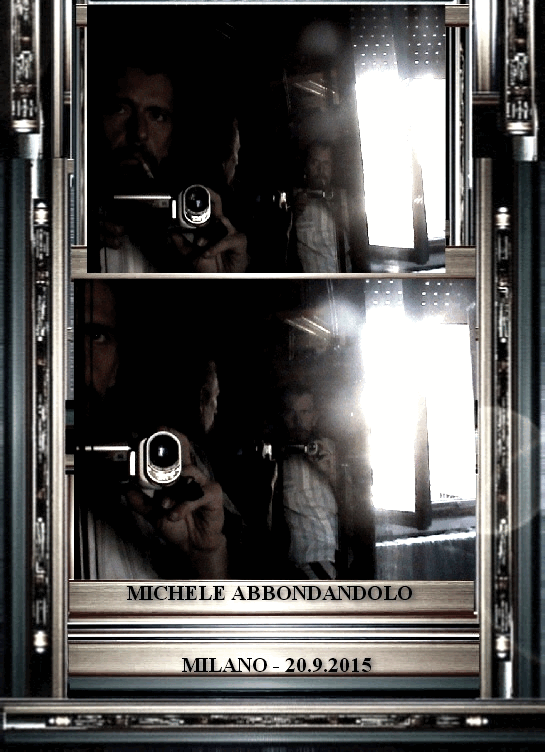


-

- ___Striker

-

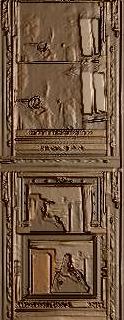









Cholesteatoma after lateral bulla osteotomy in two brachycephalic dogs
.
Schuenemann RM, Oechtering G.
Clinical Department for Small Animals, Faculty of Veterinary Medicine, University of Leipzig, Leipzig, Germany. schuenemann@
kleintierklinik.uni-leipzig.de
Abstract
This report describes a French bulldog and a pug that presented to the authors' hospital following total ear canal ablation (TECA) and lateral bulla osteotomy (LBO), with signs of recurring otitis media and difficulty opening their mouths. The bulldog also had unilateral facial paralysis and sensory deficits of the trigeminal nerve on the ipsilateral side. Computed tomography and MRI scans suggested cholesteatoma in the bulldog, but showed only slight enlargement of the bulla in the pug. Histopathologic examination of samples yielded cholesteatoma in both cases. The authors suspect that development of the cholesteatomas was linked to the TECA/LBO surgery in both cases. Cholesteatomas may occur more frequently than currently thought. Even if only slight changes of the bulla wall are detected on CT, early-stage cholesteatoma should be considered. The narrow anatomic conditions in brachycephalic dogs possibly predispose such breeds to develop cholesteatoma after middle ear surgery because complete removal of all inflammatory and epithelial tissue can be more difficult than in other breeds. To the authors' knowledge, this is the first report of an aural cholesteatoma causing sensory deficits of the trigeminal nerve.......Learn More about Bulldogs.